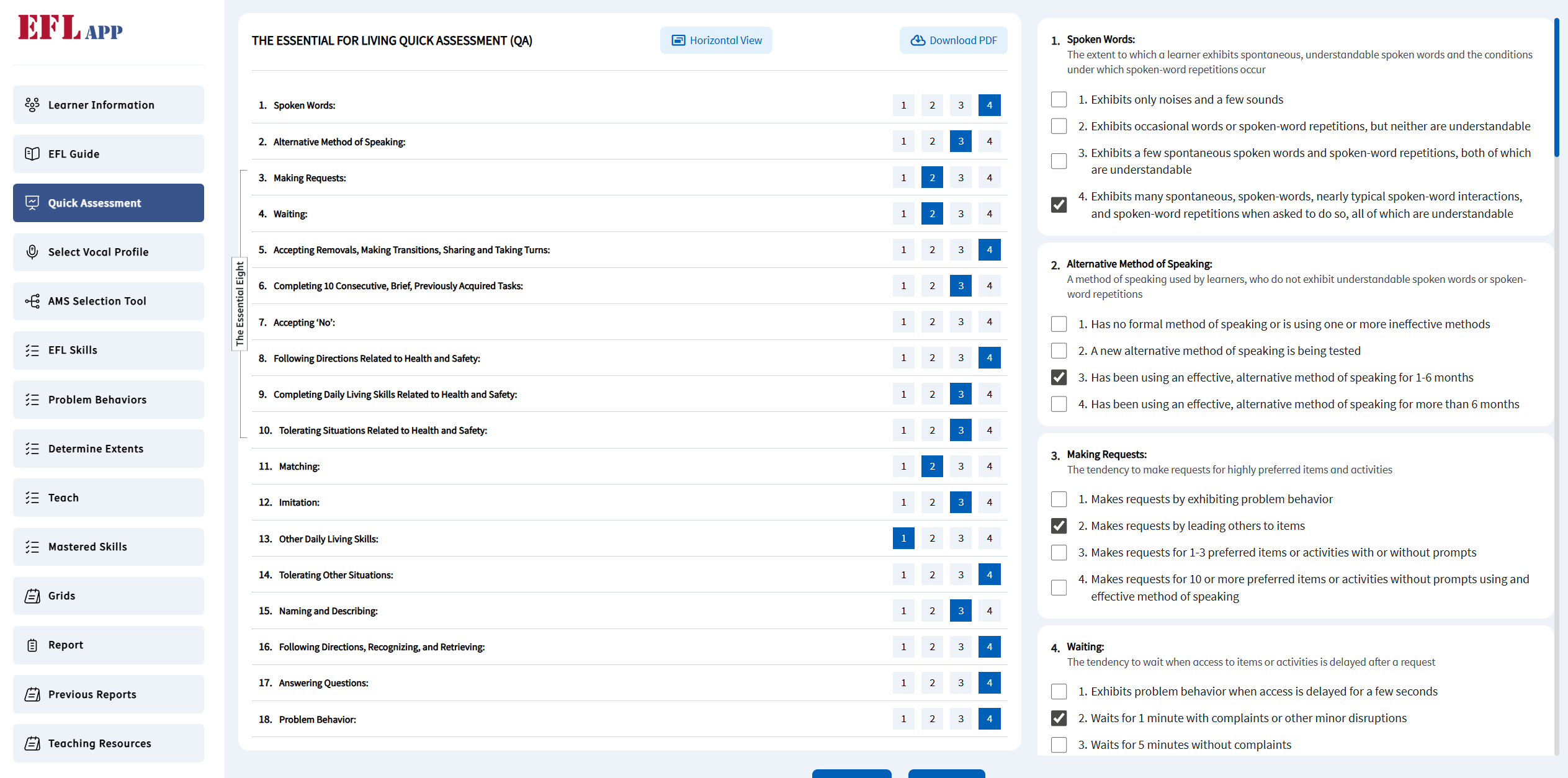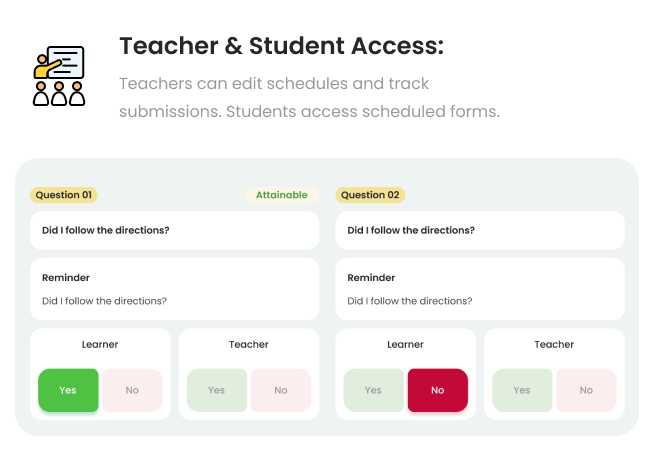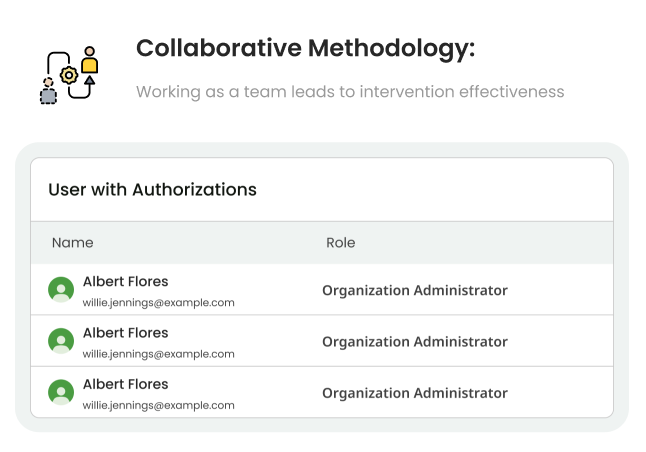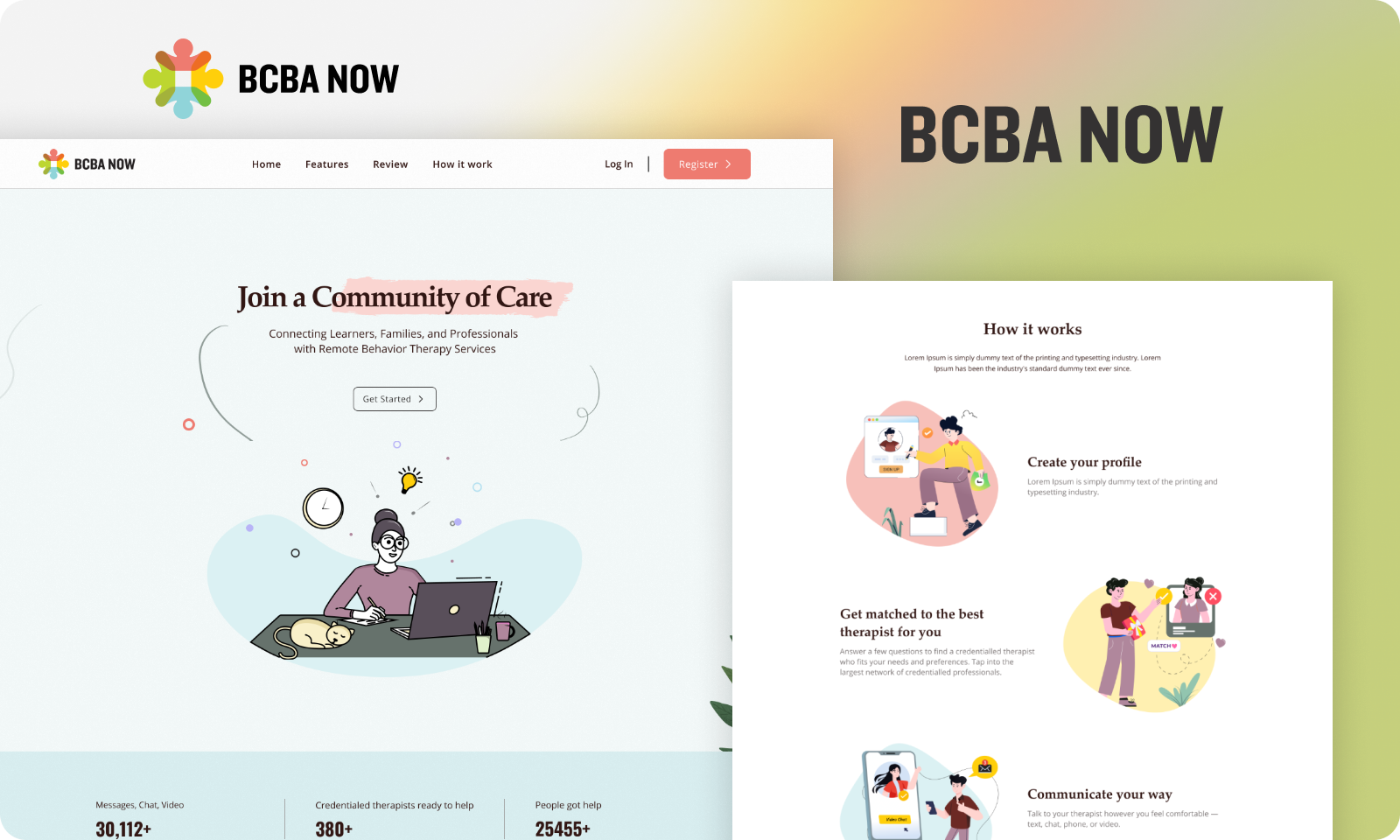Transform Your ABA Assessment Process, Programming And Progress Reporting With VB-MAPP App And EFL App.
Our Mission
Get StartedOur mission is to empower caregivers of neuro-diverse learners, using technology to provide innovative and engaging time-saving tools.
We strive to transform how we support individuals who take care of and work with learners with autism and other disabilities, by offering accessible, up-to-date resources to enhance their ability to assess, program for, and report progress.
Our goal is for our users to focus all their attention on working with their learners to help them reach their full potential.

Our Applications
Innovative tools designed to transform how professionals assess, program, and track progress.
VB-MAPP
The Verbal Behavior Milestones Assessment and Placement Program (VB-MAPP) is a widely used language and social skills assessment program for children with autism or other developmental disabilities. The VB-MAPP can provide parents and professionals with the information necessary for developing IEPs that target the most appropriate skills at the most optimal time. The electronic version of this revolutionary assessment is available for iOS products and on the web and automatically updates the grids and calculates scores. It offers videos demonstrating the assessment process and produces an editable and time-saving report based on the results.
Learn More
Essential for Living (EFL)
Essential for Living (EFL) is a comprehensive life skills curriculum with social validity, evidence-based teaching and measurement strategies and procedures, that result in the dignity and quality of life children and adults with moderate-to-severe disabilities and limited skill repertoires richly deserve.
Learn More
EESAPP-App
Most humans learn to speak quite easily, with no special training. For those who don't, the task falls to others, who may find it beyond daunting to figure out where to start. But there's no reason that we should expect ourselves to know how to do this. However, the EESAPP-App takes Dr.Esch's EESAPP Guide and Protocol and automates much of the process of creating a speech program for your learner. This revolutionary app not only guides you through the assessment, but uses Artificial Intelligence and the ability to record your learner's responses during the assessment to help guide your entire team to create an individualized speech program for each of your learners.
Learn More



Self & Match System
Self & Match is a behavioral self-monitoring system designed to help students take ownership of their actions while allowing users to track and support positive behaviors. It combines student self-assessment with user evaluation, and promotes accountability, reflection, and consistency in classroom behavior. Students rate their own behavior during specific time blocks using predefined questions. Users later review and "match" or "no match" those student responses based on actual behavior. The goal is to reinforce self-awareness and honesty, while also giving users valuable data.
Learn More
BCBA Now
Coming soon! Looking for a BCBA? Looking for a professional who is skilled in the specific areas that your practice or your learner needs? BCBA Now! matches professionals to clients to address the specific needs of that learner. BCBAs looking for growth in a particular area of ABA expertise can find those experts to guide and support them.
Learn MoreData Makes The Difference
Benefits Of Our Apps
Convenient And Accessible
Access your assessments anytime, anywhere on iOS devices and web browsers.
Interactive And Engaging
Dynamic interfaces with videos, touch interactions, and real-time feedback.
Easily Updated Information
Always have the latest protocols and features with automatic updates.
Author-Approved
Developed in collaboration with Dr. Sundberg, Dr. McGreevy, and other experts.
Our Online Training Courses
On-Site Training
VBMAPP & More
Looking for a comprehensive, interactive, and personalized way to learn about the VB-MAPP and EFL, and explore other topics related to the science of ABA? Look no further than our On-site Training Program! Led by our Lead BCBA, who has worked directly with Dr. Mark Sundberg and also Dr. Patrick McGreevy and Troy Fry to create both the VB-MAPP App and EFL App respectively. Our onsite training courses offer an unparalleled level of expertise and insight in a fun and non-intimidating way.
Our On-site Training Program is perfect for organizations looking to deepen their staff's knowledge of both assessments/curricula, whether using the print or the electronic versions. The program aims to show how using the science of ABA with all learners can make a difference!
Learn MoreJoin Our Newsletter
"Feel good" stories, successes, the latest research, product updates, and tips delivered to your inbox weekly
Data Makes The Difference
Frequently Asked Questions
Data Makes The Difference
Our Partners
 Preferred
Preferred



HIPAA Compliant Certified
We develop secure, user-friendly patient portals that ensure HIPAA compliance and protect sensitive health information.
